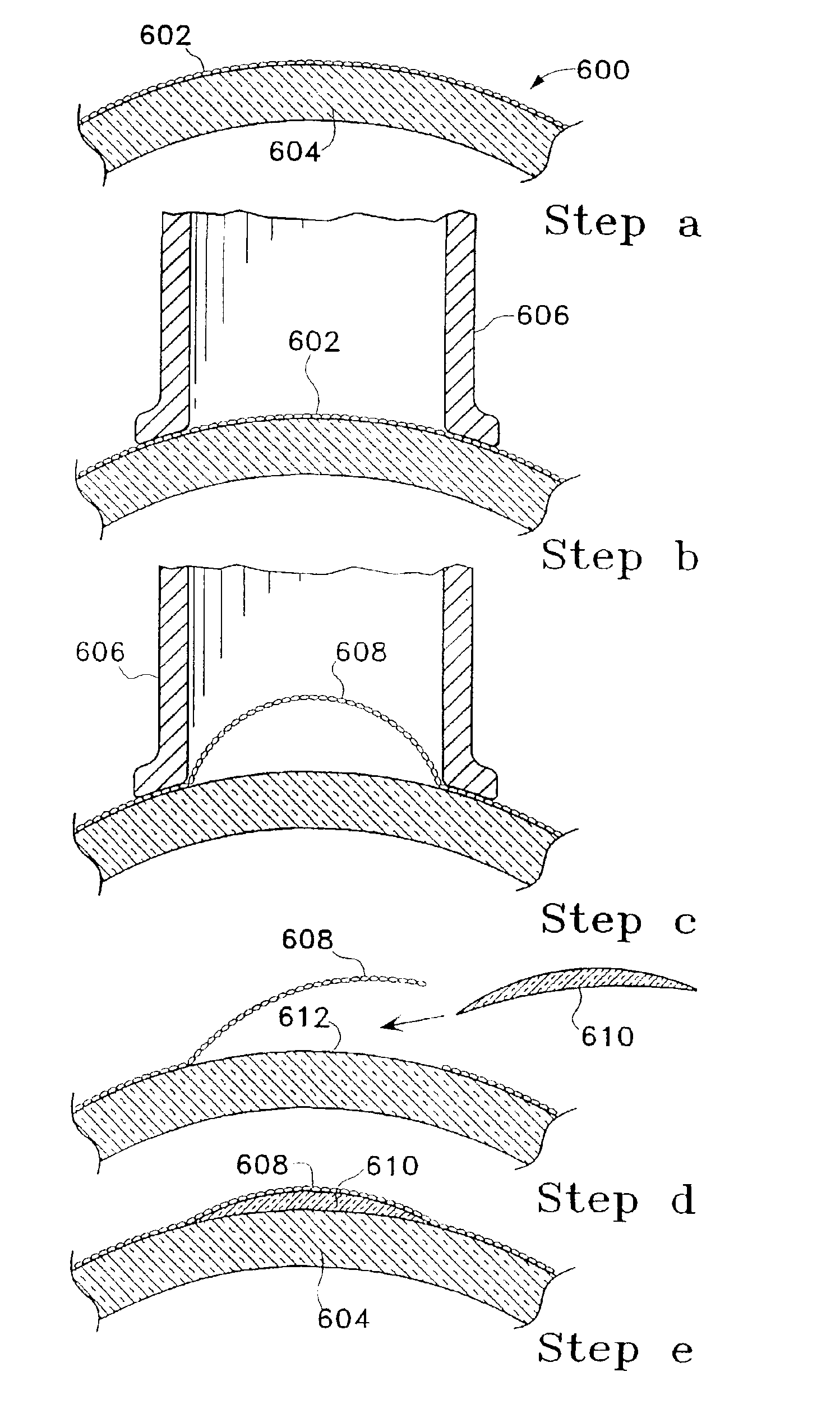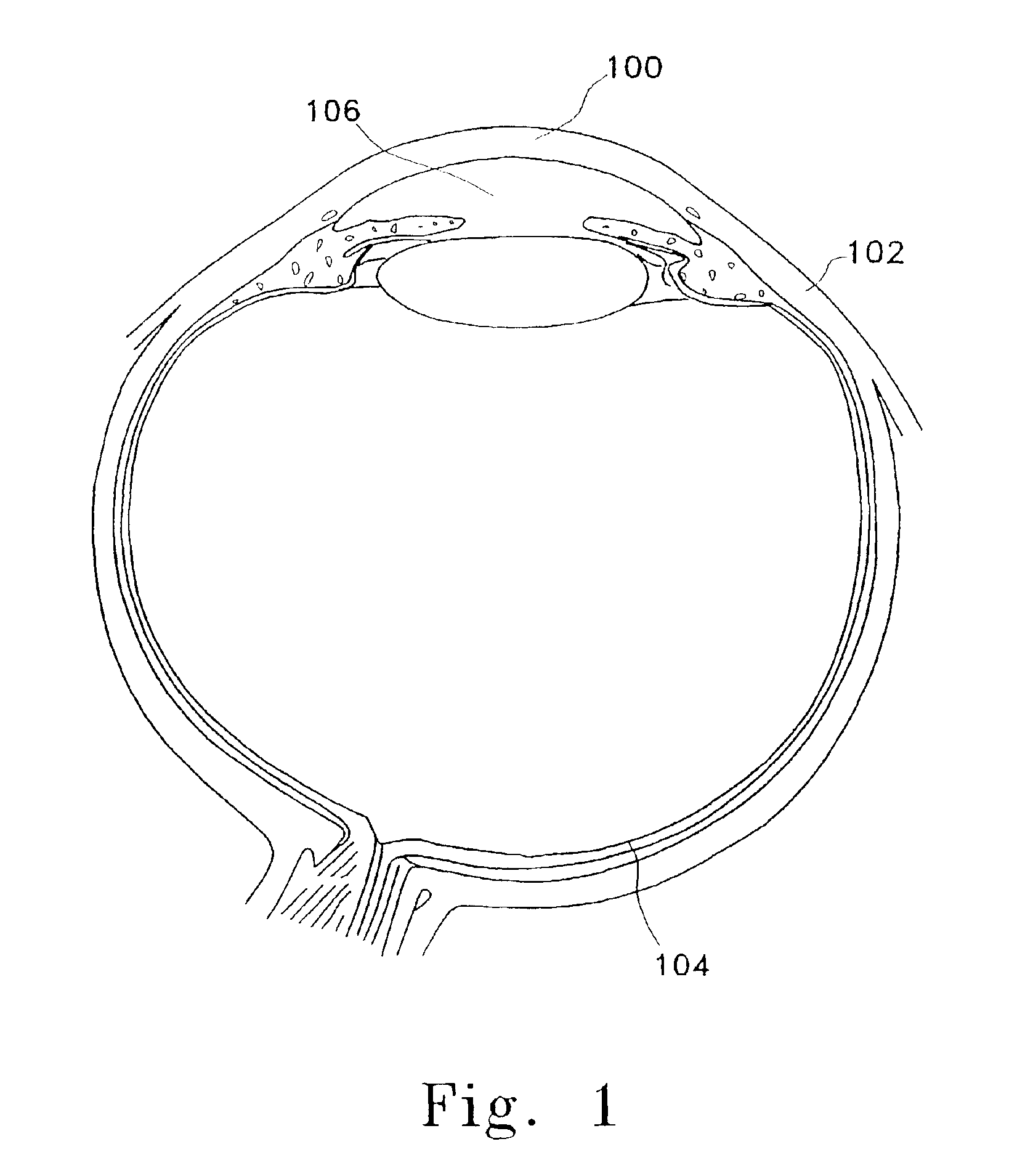Method of lifting an epithelial layer and placing a corrective lens beneath it
a technology of epithelial layer and corrective lens, which is applied in the field of living lenses, can solve the problems of spherical ammetropia, formation of image, and eye contact with ophthalmologist or optometris
- Summary
- Abstract
- Description
- Claims
- Application Information
AI Technical Summary
Problems solved by technology
Method used
Image
Examples
Embodiment Construction
[0037]The eye is designed to focus light onto specialized receptors in the retina that turn quanta of light energy into nerve action potentials. As shown in FIG. 1, light rays are first transmitted through the cornea (100) of the eye. The cornea is transparent due to the highly organized structure of its collagen fibrils. The margins of the cornea merge with a tough fibrocollagenous sclera (102) and is referred to as the corneo-scleral layer.
[0038]The cornea (100) is the portion of the corneo-scleral layer enclosing the anterior one-sixth of the eye. The smooth curvature of the cornea is the major focusing power of images on the retina (104) and it provides much of the eye's 60 diopters of converging power. The cornea is an avascular structure and is sustained by diffusion of nutrients and oxygen from the aqueous humor (106). Some oxygen is also derived from the external environment. The avascular nature of the cornea decreases the immunogenicity of the tissue, increasing the succes...
PUM
| Property | Measurement | Unit |
|---|---|---|
| diameter | aaaaa | aaaaa |
| diameter | aaaaa | aaaaa |
| diameter | aaaaa | aaaaa |
Abstract
Description
Claims
Application Information
 Login to View More
Login to View More - R&D
- Intellectual Property
- Life Sciences
- Materials
- Tech Scout
- Unparalleled Data Quality
- Higher Quality Content
- 60% Fewer Hallucinations
Browse by: Latest US Patents, China's latest patents, Technical Efficacy Thesaurus, Application Domain, Technology Topic, Popular Technical Reports.
© 2025 PatSnap. All rights reserved.Legal|Privacy policy|Modern Slavery Act Transparency Statement|Sitemap|About US| Contact US: help@patsnap.com



